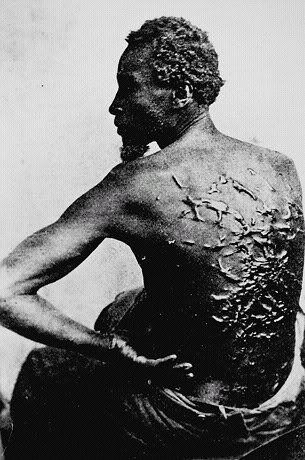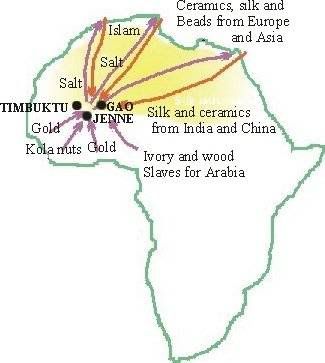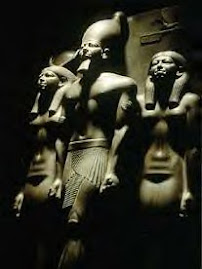


Shem Hotep ("I go in peace").
Trade Across the Sahara.
Medieval Trade Routes Across the Sahara.

The sands of the Sahara Desert could've been a major obstacle to trade between Africa, Europe, and the East, but it was more like a sandy sea with ports of trade on either side. In the south were cities such as Timbuktu and Gao; in the north, cities such as Ghadames (in present-day Libya). From there goods traveled onto Europe, Arabia, India, and China.
Muslim traders from North Africa shipped goods across the Sahara using large camel caravans -- on average around a thousand camels, although there's a record which mentions caravans travelling between Egypt and Sudan that had 12,000 camels.
They brought in mainly luxury goods such as textiles, silks, beads, ceramics, ornamental weapons, and utensils. These were traded for gold, ivory, woods such as ebony, and agricultural products such as kola nuts (which act as a stimulant as they contain caffeine). They also brought their religion, Islam, which spread along the trade routes.
Nomads living in the Sahara traded salt, meat, and their knowledge as guides for cloth, gold, cereal, and slaves.
Until the discovery of the the Americas, Mali was the principal producer of gold. African ivory was also sought after because it's softer than that from Indian elephants and therefore easier to carve. Slaves were wanted by the courts of Arab and Berber princes as servants, concubines, soldiers, and agricultural laborers.
When Sonni Ali, the ruler of the Songhai Empire, which was situated to the east along the curve of the Niger River, conquered Mali in 1462, he set about developing both his own capital, Gao, and the main centers of Mali, Timbuktu and Jenne, into major cities which controlled a great deal of trade in the region.
Arab Trans-Saharan Slave Trade.

West African encounter with the Arabs.
The conditions of trans-Saharan trade changed remarkably after Northern Africa became a part of the Islamic world in the late 7th century AD. The vast Umayyid caliphate, reaching from the slopes of Pyrenees to the banks of Indus, formed a solid market area the monetary system of which was based on gold. In practice, it meant that this precious metal had a great demand throughout the Islamic world. In the eastern parts of the caliphate, gold could obtained sufficiently from local mines or by recycling the ancient hoards. In the western parts, the situation was more difficult, for there are no gold mines in Northern Africa. However, the Muslim rulers in the west struck their own golden dinars. Since there is no evidence that they had imported gold from Egypt or the Middle East, they must have obtained it from other sources. Plausible alternatives are the mines of Sicily and southern Spain, which were known already in ancient times, and the existing Roman and Byzantine treasures. Yet part of the metal was inevitably brought from Western Africa.
In fact, it seems that regular and intensive trade across the desert was organized quite soon after the Arabs had consolided their power in Northern Africa: both the major northern terminals of the trans-Saharan routes, Sijilmasa and Tahert, were founded in mid-8th century AD. However, the trade could succeed only because it managed to join up with the internal West African commercial network. By the arrival of first North African traders, perhaps in the early 8th century, the peoples of the savanna had already established large states, like Ghana and Gao, and cities, like Jenne which had some twenty thousand inhabitants. But new cities were also born at the desert edge, like Awdaghust, Kumbi Saleh and Tadamakka, and their destiny was tied closely with the continuity of the long distance trade: when the caravan routes later changed and the volume of trade declined, these towns, too, were soon abandoned. There were three basic routes across the Sahara: the "western", leading from Sijilmasa to Awdaghust; the "central", and the most important, leading from Ifriqiya to the Niger bend; and the "Egyptian", leading from Egypt to the Niger bend via Siwa and Kufra, which was, however, abandoned in the 10th century as it was too dangerous.
Very little is known about the volume of the trans-Saharan trade during the first Islamic centuries. According to the contemporary Arabic sources, the caravans brought to the north annually huge amounts of gold, but modern estimates range from 2,000 to 3,000 kg per year. Nevertheless, a real boom in the trade began in the 10th century, with the establishment of the Fatimid caliphate in Northern Africa in 910. The reason was that the Fatimids, who were in rivalry both with the Umayyads of Spain and the Abbasids of Baghdad, needed constantly lots of gold to finance their continuous wars and extensive religious propaganda. The rise of Fatimids also meant that the western route became the most important, since their access to the central route was blocked by the Ibadites who still held Wargla. Yet the transfer of the Fatimid capital from Ifriqiya to Egypt in 971 caused a brief period of stagnation in the trade. Residing in Cairo, the Fatimid caliphs were no more interested in North African affairs, since they could obtain gold more easily from Nubian mines.
A second boom took place in the late 11th century, as the Almoravids united western Sahara, Morocco and Islamic Spain into a single empire. Like the Fatimids, the Almoravids needed also lot of gold to finance their wars against the Christians in Spain and the rebelling Almohads in Maghrib. During the Almoravid period, gold seems to have flowed to the north with great amounts, for the Almoravid golden dinars became the most common and esteemed currency in the Mediterranean area, including the Christian world. A brief period of stagnation was followed after the downfall of Almoravids in 1147, but the trade continued steadily again from the mid-13th century until the Moroccan invasion in Timbuktu in 1591.
The encounter of Islamic and West African cultures was peaceful, and it can be termed "controlled relationship". This concept is usually applied to the European encounter with China, where foreign traders were forced to obey the rules set by the Chinese government which decided unilaterally on the location of trade, the number of traders, as well as type and character of the goods. If the Europeans were not willing to accept these rules, they were not permitted to continue their trade. Before the outbreak of First Opium War in 1839, the Chinese empire was powerful enough to reject all military threats from the part of European naval powers.
In Western Africa, the contact zone was limited to the desert edge cities, where North African traders were isolated for their own quarters, lying usually outside the local dwelling. Yet there was no racial discrimination. In fact, many of the traders took local concubines, as no women of their own society were available. This behaviour is understandable, for the traders had often to spend several years in the south, and there lived also permanent agents of North African trading companies. Afterwards twin cities, with separate quarters for the Muslim and non-Muslim population, became a common structure for urban settlements throughout Western Africa.
On the other hand, the isolation of North African traders was partly voluntary for two reasons. First, the West African interior was as unhealthy for Arabs as the coastal area was for Europeans, and thus the traders were not willing to leave the desert edge cities where the conditions were healthier. Secondly, by isolating themselves, the traders were able to maintain their own culture and practice their own religion. Otherwise the traders had to follow local laws and customs, regardless whether they were against the Quranic law. But the cultural difference was recognized, and the traders were not intentionally forced to do such things which they felt offending. In China, the Europeans were obliged to perform the kowtow in front of the high mandarins, which they regarded extremely humiliating; in Western Africa, the Arab traders were exempted from performing the common gesture of submission in front of the kings, which was to sprinkle dust over one's head.
The principal reason why the North African traders were willing to accommodate in the local conditions in Western Africa, was the same as in the case of Europeans in China: it was the only way to continue the profitable trade. Before the European discovery of America, West African mines were the most important single source of gold both for Northern Africa and Europe; it is estimated that two-thirds of all the gold circulating in the Mediterranean area in the Middle Ages was imported across the Sahara. This made the uninterrupted continuity of trade more important for North African rulers than their West African counterparts. The demand for salt, for which the Arabs bartered the gold in Western Africa, is usually overemphasized in the historiography. Contrariwise, the Saharan rock salt was an expensive luxury product and available to the wealthy people only. Furthermore, it could be quite easily substituted by locally produced salt from plants and soil, whereas the North African rulers could not obtain gold for their coins elsewhere.
However, the position of the powerful states of the West African savanna was not based on the possession of the gold reserves, but on the control over the principal trade routes leading from the desert edge terminals to the gold fields in the south. In this way, the rulers of northern savanna could monopolize the trade, and they strictly prevented the Arabs to establish any direct contacts with the actual producers of gold. Inside Western Africa, the trade was carried on by local brokers, or the Dyula.
The other reason was that the Arab traders were without the protection provided by their own civilization, while staying in sub-Saharan Africa. Before the wider introduction of firearms in the 16th century, the Arab rulers of Northern Africa had no real possibilities to threaten their West African counterparts with war, as there were no such differences between the military technology which guaranteed them any absolute superiority. Furthermore, the West African armies were very large, although the claims in Arabic sources, such as the ruler of Ghana having an army of 200,000 warriors, are certainly exaggerating. Yet, in any case, we can speak of tens of thousands. To send an army of an equal size across the Sahara was extremely hazardous, and the success of the Moroccan invasion in Timbuktu in 1591 is rather an exception which reinforces the general rule: the ruler of Songhay empire considered it unnecessary to poison the wells in the desert or to organize any effective counter-attack, because he was convinced that the Moroccans would perish in the desert anyway. In fact, Judar Pasha did lose a great deal of his men during the deathly march across the western Sahara. Besides the desert, another natural advantage which protected the West Africans, was the unhealthy environment. Most parts of the savanna are infected by trypanosomiasis, which is lethal especially for quadrupeds, thus preventing the large scale use of cavalry forces in this area.
An illustrative example of the military encounter between North and West African states is the dispute on the possession of the important salt mines of Taghaza in central Sahara. At first Taghaza had been controlled by the Saharan nomads, but in the early 14th century the rulers of Mali managed to maintain some control over the routes leading these mines from the south. By the end of the following century, the askias of Songhay, which had superceded superceded Mali as the dominant power in Western Africa, extended their rule even further in the desert and appointed a governor in Taghaza. However, in 1544, Sultan Muhammad al-Mahdi, the founder of Sa'did power in Morocco, demanded the ruler of Songhay, askia Ishaq I, to give him the mines. Askia Ishaq naturally refused to do it, and a war broke out. The Moroccans sent an army to occupy Taghaza, but the army was destroyed in the desert. As response to this, a Songhay army consisting of Tuaregs, attacked northwards and sacked the southern parts of Morocco, forcing Sultan Muhammad to flee from Marrakesh. Similarly, the rulers of Bornu, lying around Lake Chad, were able to expand their political dominance deep into Fezzan, occupying the oases until the 16th century.
With the increased volume of trans-Saharan trade in the Islamic period, new cultural influences began to spread in Western Africa. The most important of them was a new religion, Islam, which was adopted in the states belonging to the sphere of the caravan trade by the end of the eleventh century. The conversion was peaceful and it had been preceded by a long period of coexistence in the cities of the trade route terminues. Motives for the conversion were many: we should not underestimate the charm of novelty and human curiosity, nor the advantages the new religion could offer for individuals, like healing and social prestige. In Western Africa, Muslims are visibly distinguished from other people with their dressing and eating habits, and they do not hesitate to perform their religious ceremonies in public. For the rulers, the conversion offered several political advantages. First, they became, at least in theory but often in reality too, equals to North African rulers, which made the maintenance of diplomatic relations easier. Yet the conversion did not include any recognition of the political supremacy of North African rulers. Secondly, Islam provided them effective means to increase their power. Literacy enabled the goverment of large empires, and Islam could be used as unifying cult within the multiethnic and multireligious states.
In Western Africa, Islam remained for a long time as a cult of the courts and commercial centres: Mali, Songhay and Bornu were no Muslim states, although medieval Arabic writers depicted them as such. Actually, the rulers were not anxious to spread the new religion among their subjects, since it had endangered their position. Contrariwise, the West African rulers had to play all the time a double role: in relation to Arab traders and rulers they acted as pious Muslims, but in relation to their own subjects they carefully fulfilled their duties as divine kings. In this way, Islam caused an internal tension in West Africa societies which occasionally broke out as civil wars, if the ruler could not maintain the balancy between the Muslim and traditionalist cliques. However, the adoption of Islam had not only political consequences but it also linked Western Africa culturally to the Islamic world and gave West Africans a concrete reason to cross the Sahara for the first time in their history.














